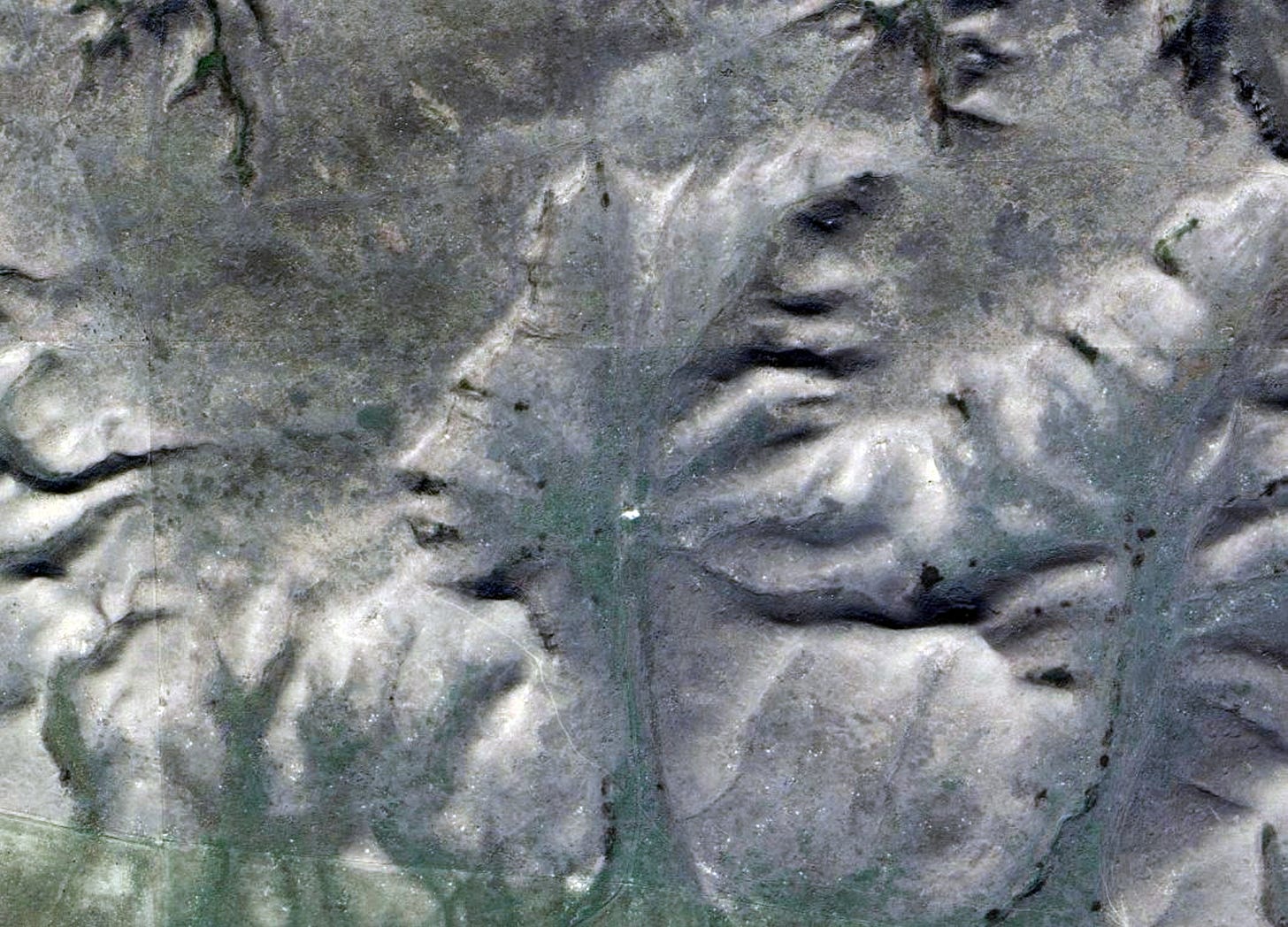The Weird Science Drop #8 🔥 Gateway to Hell is closing
🩸 Artificial blood on its way 💡 People do have auras after all 🍖 Recipe for a human meatball 🐴 Plus, nature turns on Putin
“Un dó gbe!* Welcome to issue #8 of The Weird Science Drop. Down the years, much of science fiction has turned into science fact. Many scientists have indeed admitted they were inspired by shows like Star Trek when they were little kids. But what if nature was a fan of The Last of Us? We might be about to find out, so if you haven’t already, hit the subscribe button before it’s too late!
Daniel
* Hello in Fon, a language spoken primarily in Benin.
Weird Science News ✍
💡 Pseudoscience might have laid claim to auras a long time ago, but it turns out proper science has just come across something a little similar. Humans do give out light and when you die, your light goes out with you. Researchers have used a special camera to detect ‘ultraweak photon emission’ (UPE) in living things.
They say measuring this glow could be used for ‘non-invasive insights into the biochemical and metabolic processes of living organisms’. Essentially, you can use the low-intensity light to determine the vitality of anything living. In experiments with mice, the scientists showed the UPE vanishes as soon as death occurs. Read more on Newsweek
🚑 Artificial blood is being cooked up in a Japanese lab and could be saving lives by the end of the decade. Clinical trials are already underway and a prototype has been successfully given to a small group of volunteers.
The artificial red blood cells can happily carry oxygen throughout the body just like the natural stuff, but have one huge advantage over the real thing. Unlike blood from humans, the fake variety does not need to match a certain blood type for transfusions. Like ‘universal donor’ Type O- blood, the manufactured claret is considered usable for any blood type. Read more on News Channel 8
🐴 It’s been a tough couple of weeks for well-known environmentalist Vladimir Putin. First off, Ukraine pulled off an audacious drone attack that wiped out a good slice of his precious bombers, and now he’s battling invaders from another country intent on eating him out of house and home.
One million hungry saiga antelopes have crossed the border from Kazakhstan and are busy chomping through the country’s critical grain supply, leaving farmers crying out for help. Perversely, the antelopes nearly faced extinction back in the 1990s, but a culling and hunting ban has seen them return to healthy numbers. Sometimes you can’t do right for doing wrong, even if you are an all-powerful dictator. Read more on The Star
🐵 A cure for cancer is the holy grail for medical science and we’re leaving no stone unturned in our hunt as you never know what nature might be hiding in plain sight. And the latest encouraging lead does indeed come from an unusual source - a monkey herpesvirus.
Scientists have engineered a protein from the squirrel monkey virus that strengthens cancer-fighting T cells in the body, prolonging their lives and boosting their tumour-zapping potential. This is the latest development in immunotherapy that focuses on ramping up the immune system’s natural ability to recognise and attack cancers. Read more on Gizmodo
🦠 But nature is not all sunshine and lollipops. Every so often, it can come up with some proper evil ways to kill you. And now scientists have raised the alarm after studying a group of airborne fungi called ‘Aspergillus’ that gives off real The Last of Us vibes.
When breathed in, it’s usually no harm, no foul as the immune system is pretty good at kicking them back out again. However, if you’re already laid low with a cold or Covid, these spores move in for good before starting to eat you from the inside out.
Just as worrying, an Aspergillus attack is difficult to treat and just as tricky to spot in the first place. The no-fun fungi is fond of warm weather so it’s feared as climate change turns the heat up on the planet it will soon be found in locations like North America, China, Russia, and parts of Europe. And that’s not all, like the hungry antelopes Aspergillus also likes to munch on food crops. Read more on East Coast Breakfast
Put through the grinder👨🍖
If all the humans in the world were put into a meat grinder, how big a meatball could you create out of them? It’s a question we’ve all asked ourselves, so a mathematician crunched the numbers to find out.
The result is nowhere near as big as I’d imagined, to be honest: the sphere of human goo would be just under 1km wide, weighing 500 tonnes. As you can see from the mock-up, the meatball is not small but will fit comfortably in New York’s Central Park…
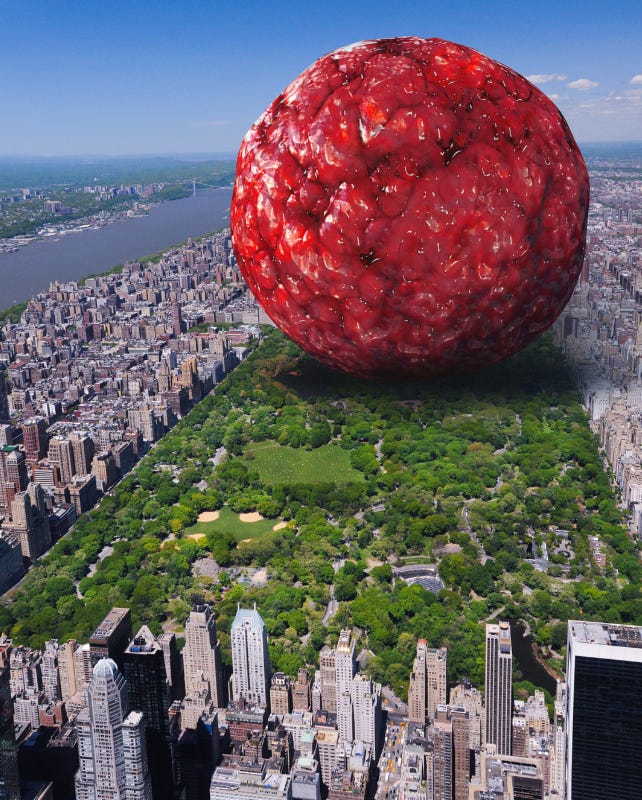
This just proves that in the big scheme of things, there are not that many of us around. With room enough for each person to spin around with their arms extended, the entire human population could mathematically fit in an area the size of Hawai'i. Famously, the same thing used to be said about the Isle of Wight, but now we’d need people standing on shoulders to get us all in.
Let’s compare our giant human meatball with other foodstuffs made out of living things: all the insects would create a sausage weighing around a billion tonnes, as would a burger made out of all the fish in the sea, while all the bacteria in the world could top up a 70 billion tonne slurpee cup.
Gateway to Hell could be closing 🔥👿
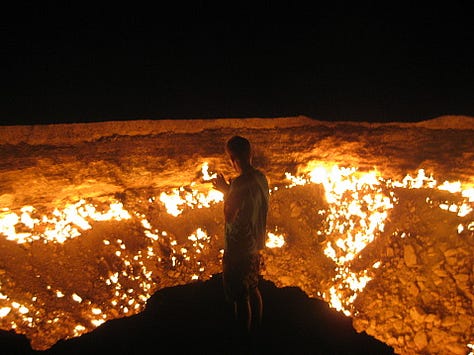
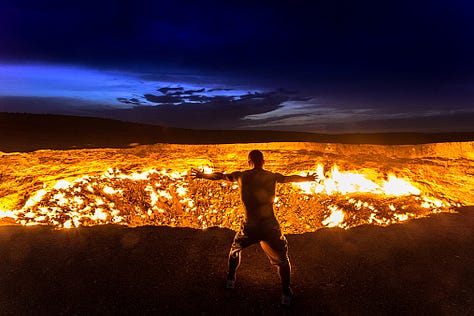
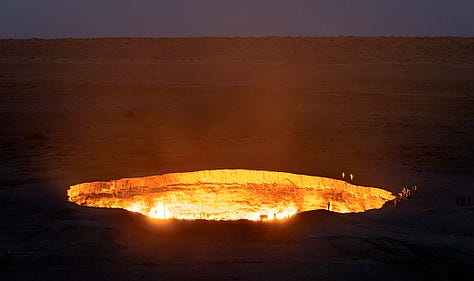
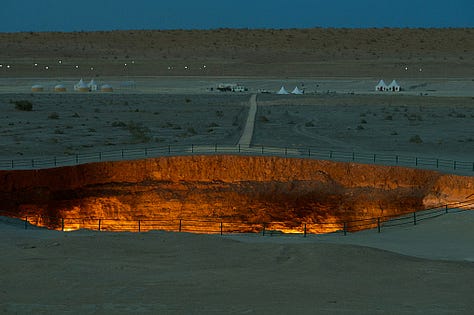
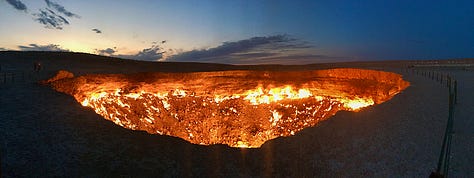
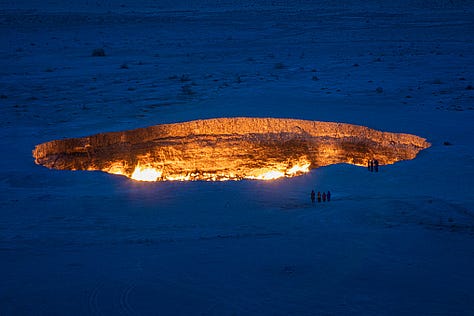
A huge gas fire that has been burning for more than 50 years in the Turkmenistan wilderness - nicknamed the ‘Gateway to Hell’ - could soon be extinguished. The incredible blazing pit was caused when clumsy Soviet scientists accidentally drilled into an underground pocket of gas and then, not knowing what to do, decided to ignite it to keep the leak under control. Ever since the blaze has been burning up massive quantities of methane, a gas that contributes to climate change, and has become quite the, ahem, hotspot for adventurous tourists.
Officials now say the fire has been reduced threefold, without being clear over what timeframe this decrease has occurred. Irina Luryeva, a director at state-owned energy company Turkmengaz, said:
“Whereas before a huge glow from the blaze was visible from several kilometres away, hence the name 'Gateway to Hell', today only a faint source of combustion remains.”
Other gas wells have been drilled around the fire so this could be a major reason why it doesn’t burn as bright as it once did. Although they might start missing out on tourism dollars, I don’t think Turkmenistan needs to worry too much as it is estimated to have the world's fourth-largest gas reserves.
I would worry about advertising this fact too much, though, as a certain neighbour might start looking their way with envious eyes once it solves its antelope problem!
Photo of the Week 📷
What looks like a huge human head has been spotted on Google Maps in a rocky area of Alberta, Canada. Now known as the ‘Badlands Guardian’, the strange structure is 250 metres across and has had many people on the internet pondering its origin - man-made, alien-made, a dead giant, or a natural formation. It’s the latter but a good example of pareidolia, the psychological phenomenon where people perceive familiar patterns, such as faces or objects, in random or vague stimuli.
For your eye holes 👀
The Marvelous Michio Kaku tackles some of the biggest questions with his usual aplomb.
Infographic Magic 📊
Cool Quote 🗣
“I'm sure the universe is full of intelligent life. It's just been too intelligent to come here.”
Arthur C Clarke
Weird Science Factoid 🤯
Sharks are older than trees, having been around for 450 million years. Trees popped up 390 million years ago. Other things sharks are older than include dinosaurs and the north star.
Weird Science Fries on the Side 🍟 (aka the best of the rest)
AI reveals hidden language patterns and likely authorship in the Bible
Magnetic fields appear to be as old as the universe itself. What created them?
World's largest deposit holds 99.999% of all gold on Earth
A New Type of Propulsion Could Revolutionize Space Travel
Did you miss? More from The Weird Science Drop 👀
Brain broken
Brain broken
Supercharge your sorry
Then most-visited links from the last newsletter 👆
Archaeologists finally crack origin mystery of Tibet’s ‘ghost ancestors’
Missions to Mars with the Starship Could Only Take Three Months
Scientists Uncover DNA Puzzle: 6,000-Year-Old Remains Reveal Mysterious Ancestors
The Weird Science Drop: edition 8
About The Weird Science Drop 🚀
Science is weird, and here’s the proof. The Weird Science Drop goes where other, more-sensible newsletters fear to tread. Every week, we grab our trusty white lab coat, bunch of bubbling test tubes and world-ending robot prototype to go in search for the overlooked, under-the-radar and, above all else, most madcap science news, views and research.
About me 👴
Daniel Smith is an old experienced journalist who has worked for a host of news publishers on both sides of the Atlantic. A long, long time ago, he fancied himself as an astrophysicist but instead turned out to be the worst scientist since the man who mapped out all those canals on Mars that turned out to be scratches on his telescope's lens. Luckily, he is now not working on the Large Hadron Collider inadvertently creating a black hole that would swallow the world by pressing the big red button but is safely behind a desk writing this newsletter, bringing you the fantastical underbelly of nature... The Weird Science Drop..
Have I missed anything? 🚨
Feel free to throw me an email or just fill out this super simple form. I'll read each and every one. Promise.





